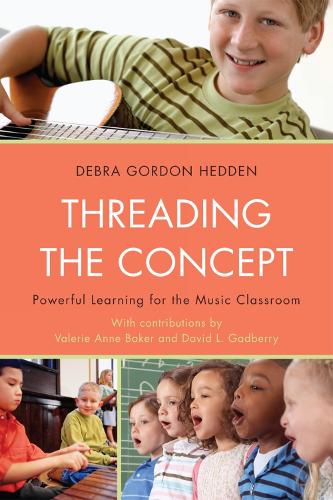
Threading the Concept: Powerful Learning for the Music Classroom
(Paperback)
Publishing Details
Threading the Concept: Powerful Learning for the Music Classroom
By (Author) Debra Gordon Hedden
Bloomsbury Publishing PLC
Rowman & Littlefield Education
16th October 2010
United States
Classifications
Professional and Scholarly
Non Fiction
Educational: Music
Techniques of music / music tutorials / teaching of music
780.71
Physical Properties
Paperback
186
Width 154mm, Height 234mm, Spine 11mm
286g
Description
This book provides both preservice and seasoned music educators with a unique and powerful way of teaching. The premise of the book is to offer a pedagogical approach that emphasizes focus on conceptual learning that is sensory oriented. From the musical concepts we teach_melody, harmony, rhythm, and form_the teacher targets one concept per lesson (e.g., melody), and provides learning experiences in singing, listening, performing, moving, reading/writing, and improvising/composing that are all focused on only that concept. Essentially, the learners are bombarded visually, aurally, and kinesthetically, gaining a firm grasp of the concept because they have heard, sung, moved, performed, written, and created in that class, all in small time segments. The teacher has a greater ability to reach all students' learning needs and engage them in active learning in each class. The book not only offers background information about the learning process, but also specific lesson templates that serve as conceptual models for music classes.
Reviews
The notion of threading as presented by Dr. Hedden in this book is a wonderful philosophical approach for general music teaching. In particular, it emphasizes what successful teachers know intuitivelythat children need to experience concepts in a variety of ways and will learn by doing. This book will be a helpful resource or textbook for students preparing for practicum or student teaching experiences in the K-6 setting. -- Jane Cassidy Ph.D., Roy and Margaret Gianelloni Professor of Music, Louisiana State University
Debra Gordon Hedden provides teachers with the theoretical and practical tools needed to prepare music lessons and curriculum aimed toward hollistic learning. This thorough compendium is a necessary resource. -- Jere T. Humphreys, professor of music, School of Music, Arizona State University
Beginning in the early 1960s, music education practice was developed through two distinct but by no means mutually exclusive means. One approach focused upon developing conceptual understanding of music (e.g., rhythm, melody, and harmony) through performance, description, and creation. The other approach, mostly culled from European approaches to music instruction, emphasized the development of instrumental and singing skills through performance. Threading the Concept is a synthesis of these approaches. Hedden (Univ. of Kansas) utilizes the best of both approaches by developing the notion of threading. Threading occurs when a student is immersed in a musical concept through a variety of different musical experiences. Thus, a child may sing or play an instrument, move, listen, improvise, or create, read, and write about a musical concept. Musical development is supported by continued refinement and immersion throughout a child's formal education. The book contains four chapters. The first three chapters discuss aspects of curricular theory, foundations upon which the notion of threading is developed, and a detailed explanation of threading. The fourth chapter provides numerous lesson plans, each structured using the concept of threading. This is a valuable resource for preservice and practicing teachers. Recommended. General readers, undergraduate students, and professionals. -- June 2011 * Choice Reviews *
Author Bio
Debra Gordon Hedden is an associate professor of music education at the University of Kansas in Lawrence. She founded the University of Kansas Youth Chorus (KUYC). Hedden served as past chair of MENC's Society for General Music, as a member of the Ad Hoc Committee on Undergraduate Curriculum Reform for the Orff-Schulwerk Association, and as a member of the editorial boards for the Bulletin of the Council for Research in Music Education and the Journal of Music Teacher Education.
